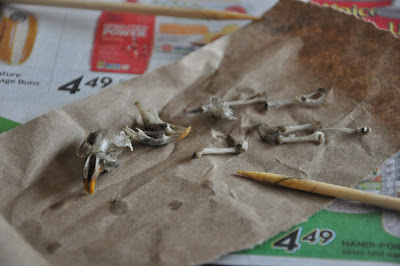Earth Day Studies: Dissecting Owl Pellets
Fortunately, farm life allows for some real-life science experiments. A favourite is collecting and dissecting owl pellets. We have done this in the past, but we followed a kit this time, to learn some new avenues for making this a successful science project.
First, we changed our dry dissection to wet. Dry dissection is best done outdoors, as the fur and feathers of the regurgitated pellets can get a bit messy. The kit suggested we drop the pellet in a bowl of water to begin dissection.
Second, we followed the kits guide for identifying bones; shrew, mouse, bird, frog and sketches of their bone structure were included for easy reference.
Lastly, we matched up bones to see how many were present and if we could re-assemble the prey. Shoulder blades, hip bones, femur, arm bones and each pellet contained a fairly intact skull and jaw bone.
Finding pellets is a great way to learn about the owls roosting in your area. If you use fresh pellets that are not fumigated, you can even find moth skeletons or their larvae as they use the warmth of the pellets for protection.
 h
h j
j